Online Magazine
& Cooking Club

In This Issue
Feature Articles
Making heads & tails of
the squash kingdom
6 Tricks to Take the Bland
out of Summer Squash
Zucchini Overload:
how to turn over-
into advantage
5 Fast Ways to Cook Squash +
5 Simple Ways to Dress It Up
In Every Issue
Why We Love It
Top 10 Questions about Squash
The Green Kitchen
Picky Eater Tips
Money Saving Tricks
News from the Farm


Cooking School
Cooking Classes:
Greek Potato Salad
Zucchini Salad Americana
Buying the Best
Storing for Flavor
Prepping Tricks & Tips
Cooking Basics
Recipes, Recipes, Recipes
14 Easy, Creative Dishes Using Summer Squash


















<<Basic Cooking Know-

5 Best Cooking Methods for Watery Squash
For concentrating and coaxing flavor from summer squash, the best cooking methods are 1) sautéing, 2) stir-
Microwaving is a close second. It doesn’t require additional water and of course, cooks the squash very quickly, producing a surprisingly good result. It just can’t add the second element of browning to coax out additional flavor.
As explained in “6 Tricks to Take the Bland Out of Summer Squash,” water-

Plump, water-
Disappearing Act
. . . shrinks and shrivels to half its size once cooked. That’s not only normal but good. Losing close to half of its volume condenses and concentrates its flavor.
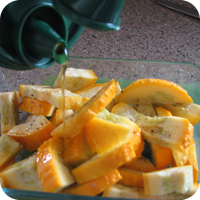
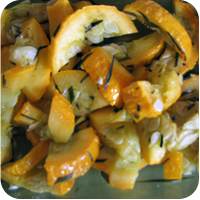



Stir-
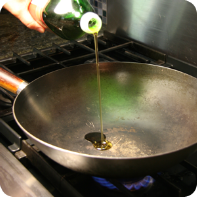

Grilling and Roasting
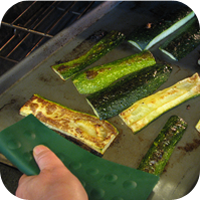

Microwaving
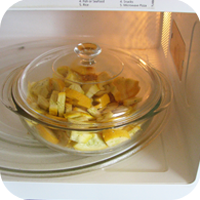

Sauteing
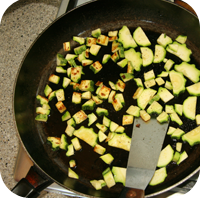






© 2009 Culinary Concepts, Inc., Boulder CO

3 Big Things to Know About Cooking Squash
When cooking summer squash, keep in mind that it’s low on flavor, largely because it’s mostly water (up to 95 percent!) So cooking summer squash is all about working around and with its high water content. The first two Big Things to know about working with this watery vegetable are:
1) Concentrate whatever flavor there is within its water-
2) Coax out that flavor even more with “flavor boosters.”
These secrets are explained in “6 Tricks to Take the Bland Out of Summer Squash.” That leaves the third Big Thing to remember when cooking squash:
3) Large Amounts Required Summer squash loses a lot of volume when cooked, as all its water evaporates or dissipates, leaving behind a mere remnant of the starting vegetable. To end up with a worthwhile amount in a finished dish, you must start with an amount that seems overwhelming. So don’t be alarmed when a recipe calls for 2, 3 or even 4 pounds of squash. It will cook down by about half, in much the way as spinach, another water-
Pattypan squash are the one exception to this general rule. As explained in “Making Heads and Tails of the Squash Kingdom,” patty pan’s flesh is much denser than other summer varieties, so it stays firmer and doesn’t lose as much volume when cooked. Accordingly, more normal-


Next Page

Prev Page